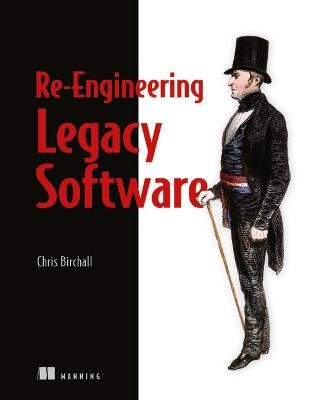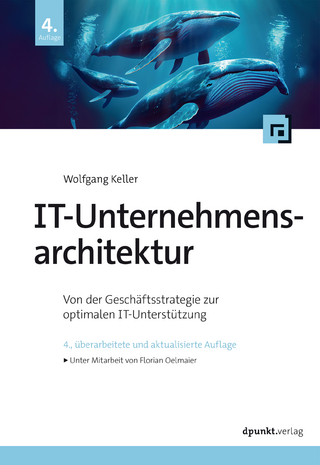
Re-Engineering Legacy Software
Manning Publications (Verlag)
978-1-61729-250-7 (ISBN)
Concrete examples
Provides techniques needed to tackle legacy projects
Leads to more productive development and reduces bugs
Most developers inherit projects built on an existing codebase that reflect design patterns, usage assumptions, infrastructure, and tooling from another time and another team. (And the docs are complete rubbish.)
Fortunately, there are techniques that can breathe new life into legacy projects, allowing them to be maintained, improved, and scaled without having to constantly fight their current limitations. Stronger applications can be developed by injecting new architectural patterns, modern techniques for performance analysis, updated tests and build tools, and a healthy dose of cultural wisdom-creating a better work experience for all involved.
Re-Engineering Legacy Software is an experience-driven guide to revitalizing inherited projects. It covers refactoring, quality metrics, toolchain and workflow, continuous integration, infrastructure automation, and organizational culture. On the technical side, readers will learn techniques for introducing dependency injection for code modularity, quantitatively measuring quality, and automating infrastructure. On the strategic side, they'll develop practical processes for solid decision making.
Core topics include deciphering and modularizing awkward code structures, effectively integrating and automating tests, replacing an outdated build system, and infrastructure automation using tools like Vagrant and Ansible.
This book is written for developers and team leads comfortable with an OO language like Java or C#.
Ansible is an open-source software platform for configuring and managing computers that has recently been gaining a lot of traction. Vagrant is computer software for building complete development environments.
Chris Birchall is a backend developer at M3 in Tokyo, working on Japan's largest medical portal site. Previously he has worked on a wide range of projects including high-performance log management software, natural language analysis tools and numerous mobile sites. He is an active member of the Tokyo Scala community and an active open source contributor. He earned a degree in Computer Science from the University of Cambridge.
preface
acknowledgments
about this book
Part 1: Getting started
1. Understanding the challenges of legacy projects
1.1. Definition of a legacy project
1.1.1. Characteristics of legacy projects
1.1.2. Exceptions to the rule
1.2. Legacy code
1.2.1. Untested, untestable code
1.2.2. Inflexible code
1.2.3. Code encumbered by technical debt
1.3. Legacy infrastructure
1.3.1. Development environment
1.3.2. Outdated dependencies
1.3.3. Heterogeneous environments
1.4. Legacy culture
1.4.1. Fear of change
1.4.2. Knowledge silos
1.5. Summary
2. Finding your starting point
2.1. Overcoming feelings of fear and frustration
2.1.1. Fear
2.1.2. Frustration
2.2. Gathering useful data about your software
2.2.1. Bugs and coding standard violations
2.2.2. Performance
2.2.3. Error counts
2.2.4. Timing common tasks
2.2.5. Commonly used files
2.2.6. Measure everything you can
2.3. Inspecting your codebase using FindBugs, PMD, and Checkstyle
2.3.1. Running FindBugs in your IDE
2.3.2. Handling false positives
2.3.3. PMD and Checkstyle
2.4. Continuous inspection using Jenkins
2.4.1. Continuous integration and continuous inspection
2.4.2. Installing and setting up Jenkins
2.4.3. Using Jenkins to build and inspect code
2.4.4. What else can we use Jenkins for?
2.4.5. SonarQube
2.5. Summary
Part 2: Refactoring to improve the codebase
3. Preparing to refactor
3.1. Forming a team consensus
3.1.1. The Traditionalist
3.1.2. The Iconoclast
3.1.3. It's all about communication
3.2. Gaining approval from the organization
3.2.1. Make it official
3.2.2. Plan B: The Secret 20% Project
3.3. Pick your fights
3.4. Decision time: refactor or rewrite?
3.4.1. The case against a rewrite
3.4.2. Benefits of rewriting from scratch
3.4.3. Necessary conditions for a rewrite
3.4.4. The Third Way: incremental rewrite
3.5. Summary
4. Refactoring
4.1. Disciplined refactoring
4.1.1. Avoiding the Macbeth Syndrome
4.1.2. Separate refactoring from other work
4.1.3. Lean on the IDE
4.1.4. Lean on the VCS
4.1.5. The Mikado Method
4.2. Common legacy code traits and refactorings
4.2.1. Stale code
4.2.2. Toxic tests
4.2.3. A glut of nulls
4.2.4. Needlessly mutable state
4.2.5. Byzantine business logic
4.2.6. Complexity in the view layer
4.3. Testing legacy code
4.3.1. Testing untestable code
4.3.2. Regression testing without unit tests
4.3.3. Make the users work for you
4.4. Summary
5. Re-architecting
5.1. Breaking up a monolithic application into modules
5.1.1. Case study—a log management application
5.1.2. Defining modules and interfaces
5.1.3. Build scripts and dependency management
5.1.4. Spinning out the modules
5.1.5. Giving it some Guice
5.1.6. Along comes Gradle
5.1.7. Conclusions
5.2. Distributing a web application into services
5.2.1. Another look at Orinoco.com
5.2.2. Choosing an architecture
5.2.3. Sticking with monolithic architecture
5.2.4. Separating frontend and backend
5.2.5. Service-Oriented Architecture
5.2.6. Microservices
5.2.7. So what should Orinoco.com do?
5.3. Summary
6. The Big Rewrite
6.1. Deciding the project scope
6.1.1. What is the project goal?
6.1.2. Documenting the project scope
6.2. Learning from the past
6.3. What to do with the DB
6.3.1. Sharing the existing DB
6.3.2. Creating a new DB
6.3.3. Inter-app communication
6.4. Summary
Part 3: Beyond refactoring—improving project workflow and infrastructure
7. Automating the development environment
7.1. First day on the job
7.1.1. Setting up the UAD development environment
7.1.2. What went wrong?
7.2. The value of a good README
7.3. Automating the development environment with Vagrant and Ansible
7.3.1. Introduction to Vagrant
7.3.2. Setting up Vagrant for the UAD project
7.3.3. Automatic provisioning using Ansible
7.3.4. Adding more roles
7.3.5. Removing the dependency on an external database
7.3.6. First day on the job—take two
7.4. Summary
8. Extending automation to test, staging and production environments
8.1. Benefits of automated infrastructure
8.1.1. Ensures parity across environments
8.1.2. Easy to update software
8.1.3. Easy to spin up new environments
8.1.4. Enables tracking of configuration changes
8.2. Extending automation to other environments
8.2.1. Refactor Ansible scripts to handle multiple environments
8.2.2. Build a library of Ansible roles and playbooks
8.2.3. Put Jenkins in charge
8.2.4. Frequently asked questions
8.3. To the cloud!
8.3.1. Immutable Infrastructure
8.3.2. DevOps
8.4. Summary
9. Modernizing the development, building and deployment of legacy software
9.1. Difficulties in developing, building and deploying legacy software
9.1.1. Lack of automation
9.1.2. Outdated tools
9.2. Updating the toolchain
9.3. Continuous integration and automation with Jenkins
9.4. Automated release and deployment
9.5. Summary
10. Stop writing legacy code!
10.1. The source code is not the whole story
10.2. Information doesn't want to be free
10.2.1. Documentation
10.2.2. Foster communication
10.3. Our work is never done
10.3.1. Periodic code reviews
10.3.2. Fix one window
10.4. Automate everything
10.4.1. Write automated tests
10.5. Small is beautiful
10.5.1. Example: the Guardian Content API
10.6. Summary
index
| Verlagsort | New York |
|---|---|
| Sprache | englisch |
| Gewicht | 406 g |
| Einbandart | kartoniert |
| Themenwelt | Informatik ► Software Entwicklung ► Software Architektur |
| Schlagworte | Altsystem • Legacy Software • Legacy Systeme • Unternehmenssoftware • Vagrant (Virtuelle Entwicklungsumgebung) |
| ISBN-10 | 1-61729-250-8 / 1617292508 |
| ISBN-13 | 978-1-61729-250-7 / 9781617292507 |
| Zustand | Neuware |
| Haben Sie eine Frage zum Produkt? |
aus dem Bereich


